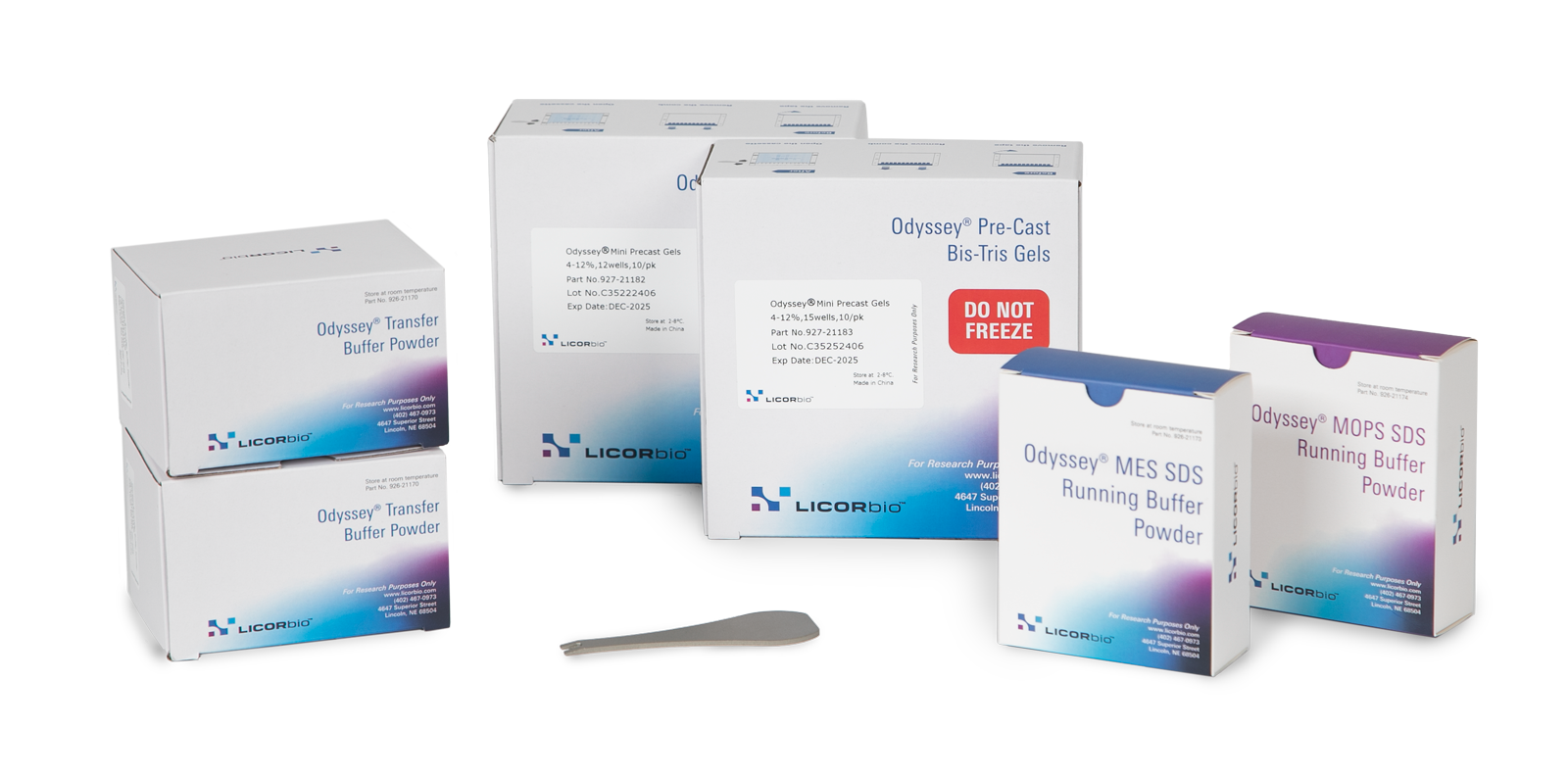Troubleshooting for In-Gel Western
High background
| Possible Cause | Possible Solution |
|---|---|
| Stacking gel is still present | Cut the stacking gel away after electrophoresis. |
| Too much antibody | Reduce the concentration of secondary antibody. |
| Uneven gel background may result from insufficient solution volumes for incubations | Use enough solution at each step (fixation, washes, and antibody incubations) to completely immerse the gel. |
| Pressing or squeezing gel during fixation and staining can cause splotchy background | Handle the gel gently, with gloved hands, and by the edges whenever possible. |
| Gel was not thoroughly washed | Use plenty of wash buffers to allow the gel to move freely. Do not allow the gel to stick to the bottom of the container. Extend wash times or increase the number of washes. Background may decrease if the gel is allowed to soak in PBS overnight at room temperature (protect from light). |
| Contaminated scanning surface | Before each use, apply methanol or ethanol followed by ultrapure water and wipe with lint-free tissues to remove residual dye. Remove any visible smears with isopropanol. Use canned air to remove any lint or dust. |
Weak or no signal
| Possible Cause | Possible Solution |
|---|---|
| Not enough antibody | Increase the amount of primary and/or secondary antibody. Extend the primary antibody incubation to overnight at 4 °C to increase the signal. Remember that In-Gel detection is not as sensitive as blot detection; adjust sample loading and antibody concentrations accordingly. |
| Antibody dilution buffer is not optimal for your primary antibody | Try a different dilution buffer; this can significantly affect performance of some primary antibodies. Suggested buffers include 3-5% BSA, Intercept® Blocking Buffer and PBS or TBS (all with 0.1% Tween® 20). Other blockers (milk, casein, commercial blockers) and Tween 20 concentrations can also be tested. |
| Gel type is not optimal | NuPAGE® Bis-Tris pre-cast gels or AMRESCO NEXT gels are recommended for In-Gel detection. Other commercial gel sources and homemade gels can be used, but these may show reduced sensitivity and require further optimization. |
| Antibody did not penetrate gel sufficiently or evenly | Acrylamide percentage was too high. Try a lower percentage or a gradient gel. Increase volume for antibody incubations so that gel is completely immersed in antibody solution. Make sure gel is adequately fixed. Some monoclonal antibodies may be sensitive to residual acid in the gel; in this situation, eliminate acetic acid from the fix or extend the water wash step. |
| Gel was left in isopropanol/acetic acid too long | This may cause protein to be lost from the gel. Fix for 15 minutes only. |
Fuzzy or irregularly shaped bands
| Possible Cause | Possible Solution |
|---|---|
| Gel type is not optimal | AMRESCO NEXT gels or NuPAGE Bis-Tris pre-cast gels are recommended for In-Gel detection. Other commercial gel sources and homemade gels can be used, but these may show reduced sensitivity and require further optimization. |
| Gel is overloaded | Try loading less protein; bands can appear "blobby" if the amount of target protein in the band is too high. |
| Inadequate fixation of gel | If problem persists when gel is fixed according to the protocol, try adjusting the isopropanol or acetic acid concentrations. Fixing in isopropanol alone (no acetic acid) can cause irregularly shaped bands. |
Non-specific or unexpected bands
| Possible Cause | Possible Solution |
|---|---|
| Antibody concentration is too high | Reduce the amount of antibody used or reduce incubation times. |
| Cross-reactivity between antibodies in a two-color experiment | Antibodies must be chosen carefully. Find more information for Two-Color Western Detection here. |
| Antibody dilution buffer is not optimal for primary antibody | Try a different dilution buffer; this can significantly affect performance of some primary antibodies. Suggested buffers include 3-5% BSA, Intercept Blocking Buffer, and PBS or TBS (all with 0.1% Tween 20). |
| Bleed-through between 700 nm and 800 nm channels | If the signal is extremely strong (saturated) in one channel, it may appear faintly in the other channel. Re-scan gel at a lower intensity or repeat using less antibody or protein. |
